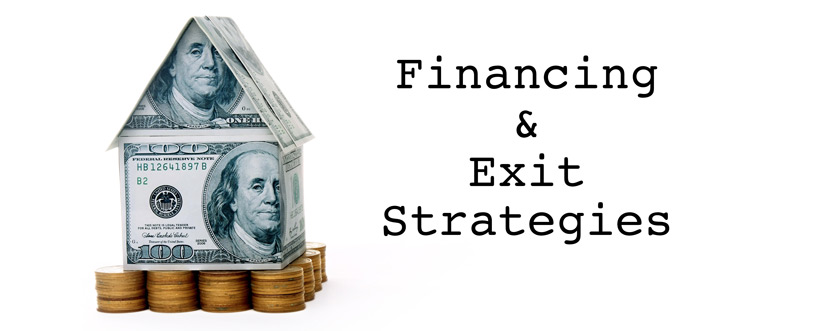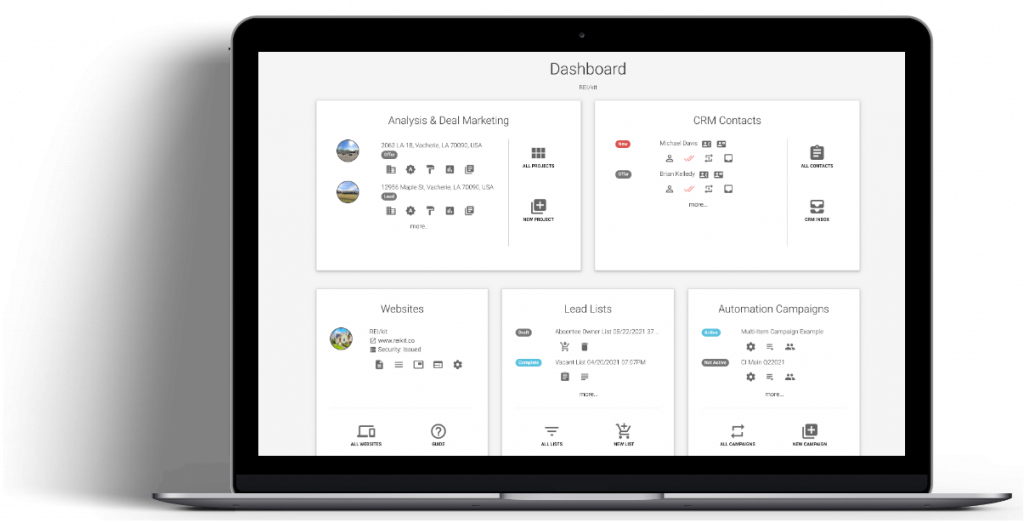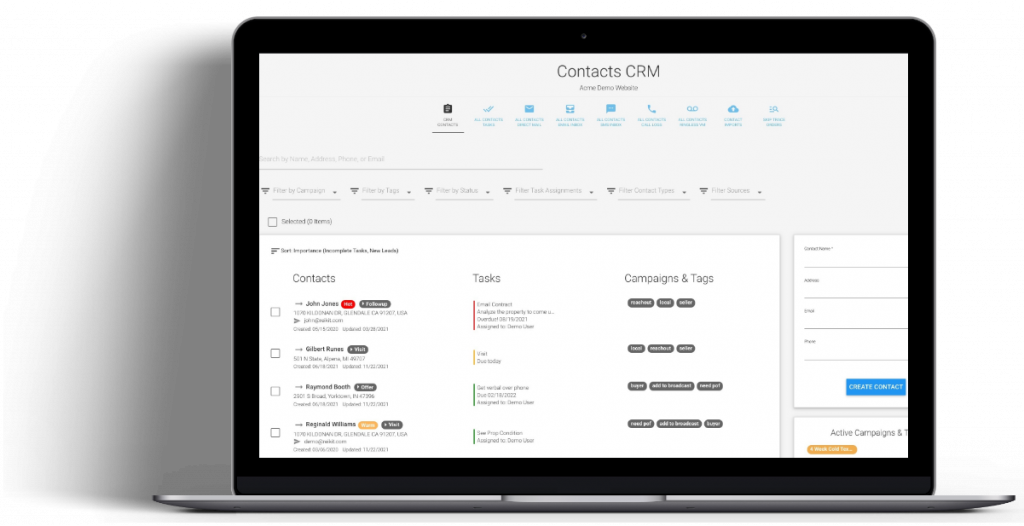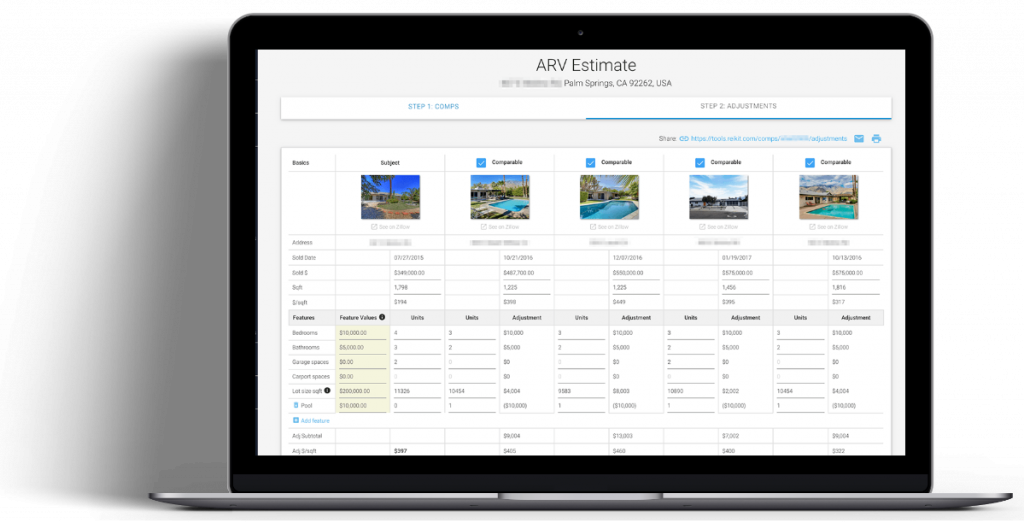
While I’ve been improving the financing section of the REIkit House Flipping Software, I’ve had some time to think about the pros and cons of a few of the different investment strategies that can be used to finance your real-estate fix and flip or buy and hold projects, and eventually get your money back to reinvest in your flipping business, or rental property investments as in the case of the BRRRR strategy.
Coincidentally, I’ve recently also had the chance to get into a few debates on the subject. There must be something in the air this week…
The following is the list of the most common financing strategies that I’ve been thinking about recently:
Strategy 1: Purchase using 100% own cash * Rehab * Flip
Strategy 2: Purchase using 100% cash * Rehab * Refinance 70% of ARV after 6 months (BRRRR strategy)
Strategy 3: Purchase using 100% cash * Rehab * Refinance 70% of purchase costs before 6 months (BRRRR strategy)
Strategy 4: Purchase using 30-ish% Cash, 70-ish% Hard Money * Rehab * Flip
Strategy 5: Purchase using 30% Cash 70% Hard money * Rehab * Refinance 70% ARV (BRRRR strategy)
Strategy 6: Purchase 5-ish% cash, 95-ish% FHA+203K * Sell or Rent after 1 year (House Hacking)
So let’s do a deep dive…
Strategy 1: Purchase using 100% own cash * Rehab * Flip
When using all of your own cash, this investment strategy has the lowest financial risk, which makes it a good strategy for first time fix and flip investors.
Pros
When you use your own cash you don’t have to worry about the largest holding cost, the loan interest expense, and as a result, this strategy has the lowest holding costs.
The losses in this strategy can be limited only to what you put into the project, which can be a good option for first time investors who want to learn on the job without the pressures of increasing holding costs over time.
This time luxury allows you many freedoms including the ability to extend the time period by acting as your own general contractor (GC), or even doing much of the work yourself.
If you keep your timelines tight, then the savings in financing interest will have a huge positive impact on the profitability of your deal. So if things go right, at the end of the project you get 100% of your investment back plus more of the profit.
Cons
Of course this strategy is only possible if you have the cash in the first place.
By not using leverage you will limit the number of projects that you can execute at the same time, and thus you will limit your ability to scale your investment returns.
Even with this strategy, the economics will start to work against you over time, especially if you decided to do the work yourself and take more than a few months executing the flip. Take too long and you may realize that you have been working for 12 months for minimum wage, or worse…
Strategy 2: Purchase using 100% cash * Rehab * Refinance 70% of ARV after 6 months (BRRRR strategy)
This is the longer-term (sell turnkey) or longest-term (buy and hold, or BRRRR) cousin of the first strategy. The difference is in how much money you get back, and when.
After you have completed your rehab in Strategy 1, you will then typically rent the property as soon as possible to start making income while you wait for a 6-month long seasoning period required by banks before allowing you to cash out refinance based on your improved property value.
Then after 6 months, you can perform a cash-out refinance of your property according to its new after repair value, which hopefully will be a significant premium to your purchase and rehab costs. You should be able to refinance around 70% of your improved value.
Strategy 3: Purchase using 100% cash * Rehab * Refinance 70% of purchase costs before 6 months (BRRRR strategy)
This strategy applies if you purchased the property using all cash as in the first scenario, were able to rehab the property quickly to put it into a financeable state, and you need some money back as quickly as possible for another deal, but don’t want to sell right away as part of your BRRRR strategy.
In this strategy you can refinance your property before the 6-month seasoning period is up by using the FNMA delayed financing exception. The downside of using this method is that you can only cash out refinance based on your purchase costs, as opposed to based on the improved after repair value (ARV).
While often it’s more ideal to wait until the seasoning period is up to be able to refinance based on ARV, this is an option if you need it.
Strategy 4: Purchase using 30-ish% Cash, 70-ish% Hard Money * Rehab * Flip
One of the most common rehab scenarios is where you use hard money to quickly acquire the property and fund the rehab. This is a great use of other people’s money (OPM) provided that you have systems in place to make sure that you don’t run over-time.
Pros
Hard money you the ability to leverage your cash to make more deals happen at the same time, if successful, creating a good framework for scaling your business.
It closes much quicker than conventional financing, and if you don’t have the cash on hand, or private money relationships, this may be your only option to acquire an investment property.
When you’re done with your rehab, you sell the property immediately and get your money back + your profit. The faster you rehab and sell, the bigger your profit.
Cons
Hard money is very expensive and so will eat into the profit of an individual flip, and has the potential to eat into the entire profit or create a loss if project timelines are not short.
Hard money is priced based on risk, and so it will be more expensive and therefore more risky to you as an investor the less experience that you have, as you are likely to underestimate your timelines and costs.
Strategy 5: Purchase using 30% Cash 70% Hard money * Rehab * Refinance 70% ARV (BRRRR strategy)
If you didn’t purchase with all cash, such as when you purchased the project with hard money, and you want to keep your property for a while, then you will want to refinance the property as soon as possible to get away from expensive hard money holding costs.
Using this scenario, the soonest that you will be able to refinance using a conventional mortgage will be after the 6-month seasoning period.
Pros
When you refinance you should be able to use the improved value to determine your financing amount, so you should be able to cash out enough to return the originally borrowed hard money.
Cons
The Delayed Financing Exception will not apply in this case because the purchase costs were financed, and so in order to cash out refinance you will need to wait out the 6-month seasoning period.
Strategy 6: Purchase 5-ish% cash, 95-ish% FHA+203K * Sell or Rent after 1 year (House Hacking)
If you are planning on living in the property as your primary residence, then you may have the ability to purchase the property using standard FHA financing plus a 203k loan for rehab costs.
Pros
This is commonly referred to as house hacking, and is a good low risk option when you are first starting out with little money.
The strategy requires the least up front money, and is the highest use of inexpensive leverage. It allows you to purchase and rehab a 1-4 family residence provided you live in one of the units for at least a year.
Cons
There is a significant documentary and time burden required to get a 203k loan funded, which makes it impractical in markets where cash offers and reduced contingencies are common.
Additionally, you do have to live in the property for a year…
What about you?
I know that there are many other strategies, and I’d love to get your opinion on what you’re using, or what works for you that I have not talked about here.



